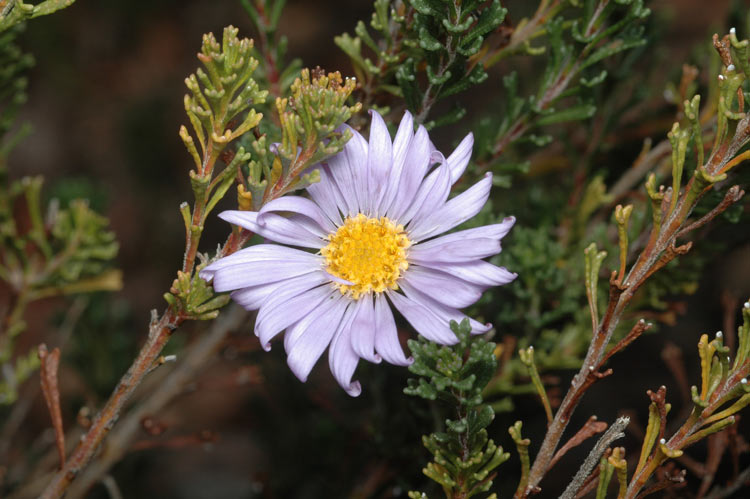A taxonomist is a scientist who studies the similarities and differences between species.
Being able to distinguish between different species is the first step in understanding their biology and their relationships with other species. Taxonomy enables us to do things like:
- describing and naming species that are new to science
- producing resources to help identify fish sold at markets
- studying the plants impacted by bushfires
- surveying biodiversity in the deep sea
- telling potential pest insects apart from native ones
To celebrate Taxonomist Appreciation Day on 19 March, we asked taxonomists from our National Research Collections Australia to tell us about species special to them.
A shrinking violet
Frank Zich is Collection Manager and Curator of the Australian Tropical Herbarium in Cairns. In 2021, he named the new species Boea resupinata. It grows in just a few areas on Cape York Peninsula.
“We have preserved specimens of this plant that date back to the 1970s. But it wasn’t until I was curating specimens in the herbarium that I recognised it was distinct from its Australian relatives,” Frank said.
“Boea resupinata is in the same family as African violets, but despite looking quite similar it is not closely related. This species is one of three Boea species in Australia. There are another nine in New Guinea and the Solomon Islands. They’re renowned for their ability to dry out and then rehydrate when rains return, which is why they are commonly called resurrection plants.”
A branching chain of blue-green algae
Dr Anusuya Willis and Dr Cintia Iha work at the Australian National Algae Culture Collection in Hobart, where researchers study microalgae and seaweed.
Earlier this year, Anusuya co-authored a paper on the taxonomy of cyanobacteria, which cause blue-green algae blooms in freshwater lakes and rivers.
“The species Umezakia ovalisporum is interesting because it forms branches, especially when under environmental stress, which blue-green algae rarely do,” Anusuya said.
“We’re keen to understand the relationships between different species, which is important for understanding and managing blooms,”
Cintia has used genomics to see the connections between remnant Giant Kelp Forests (Macrocystis pyrifera) in Tasmania, discovering that northern and southern populations are not interbreeding. This is important for selecting the right seeds for restoration to increase the success of these projects.
“Population genomics gives us insights into the living relationships between individuals in the different populations and is important for understanding local adaptations, which is useful for conservation,” Cintia said.
A hidden orchid
Dr Mark Clements is an honorary fellow at the Australian National Herbarium in Canberra. In the photo above he is holding a specimen of an orchid preserved in ethanol. It was discovered in Barrington Tops National Park in 2016.
“We recognised this orchid as being from Rhizanthella, an unusual group of orchids that spend their lifecycle underground. We named it Rhizanthella speciosa because of its showy appearance,” Mark said.
The mauve to pinkish-purple flower head of Rhizanthella speciosa makes it quite showycompared to other Rhizanthella species. But it’s a show few eyes ever get to see. It spends most of its life underground and blooms hidden underneath leaf litter.
While Mark has now retired, he trained Dr Heidi Zimmer to follow in his footsteps as an orchid taxonomist.
A misunderstood daisy

Sometimes plants and animals, especially insects, can wait many decades for a formal scientific name.
Brendan Lepschi is Head Curator at the Australian National Herbarium and Dr Lydia Guja is a Seed Bank Manager at the National Seed Bank, Australian National Botanic Gardens. They are working on the taxonomy and conservation of a plant currently known by the phrase name Oleria sp. Rhizomatica.
“This species is a shrub up to 40 centimetres tall. It grows in montane woodland and shrubland in the ACT and adjacent NSW,” Brendan said.
The species was badly impacted by the bushfires in 2019 and 2020, when its entire range burned.
“Conservation projects are underway to secure this species, but it’s challenging to conserve a species that doesn’t have a name. That’s why we’re excited to see it being formally described and named scientifically” Lydia said.
The Australian National Herbarium is part of the Centre for Australian National Biodiversity Research, a joint venture between Parks Australia’s Australian National Botanic Gardens and the National Research Collections Australia at CSIRO.
The Australian Tropical Herbarium is a joint venture between CSIRO, Australian and Queensland Governments and James Cook University.
